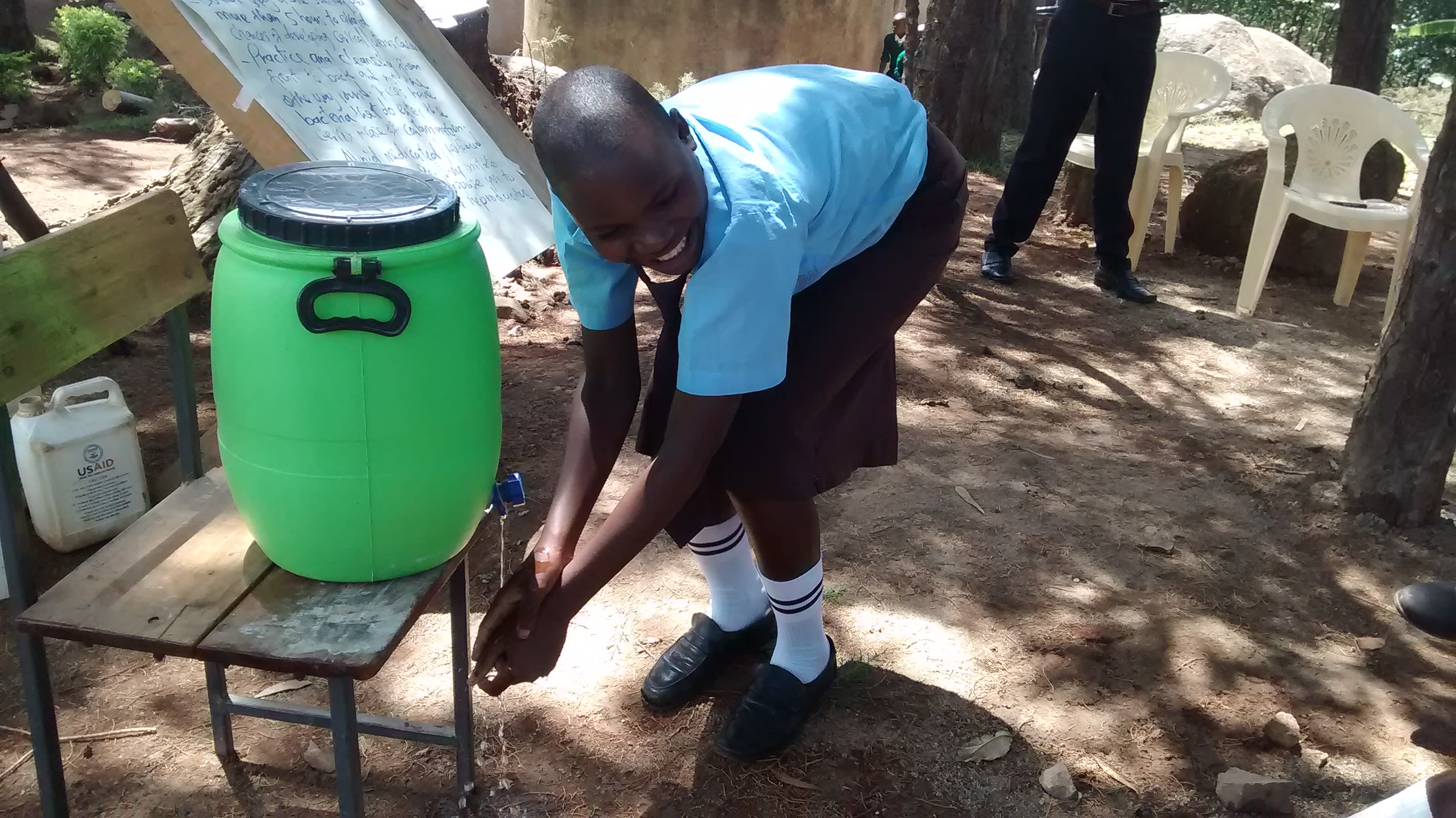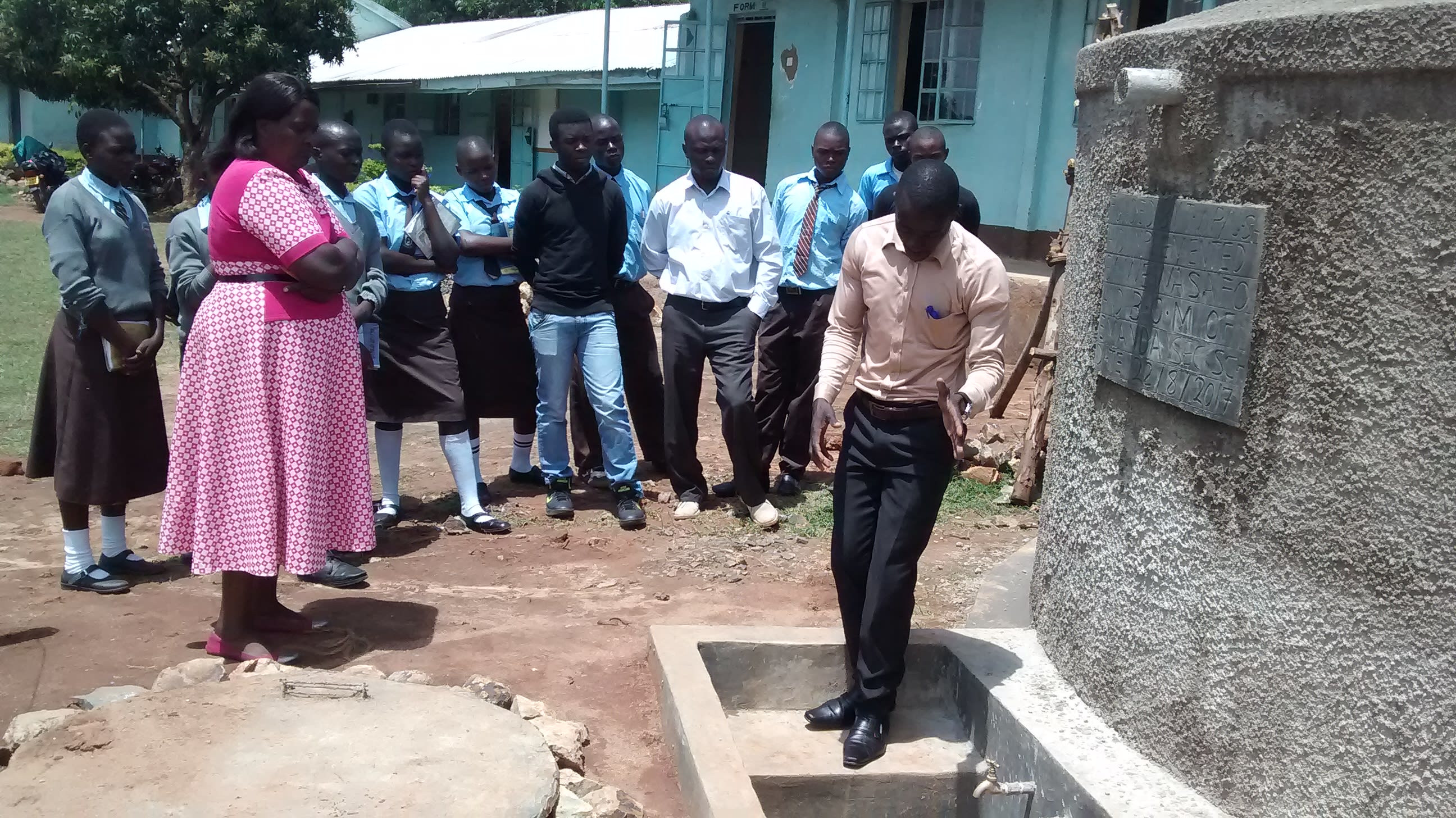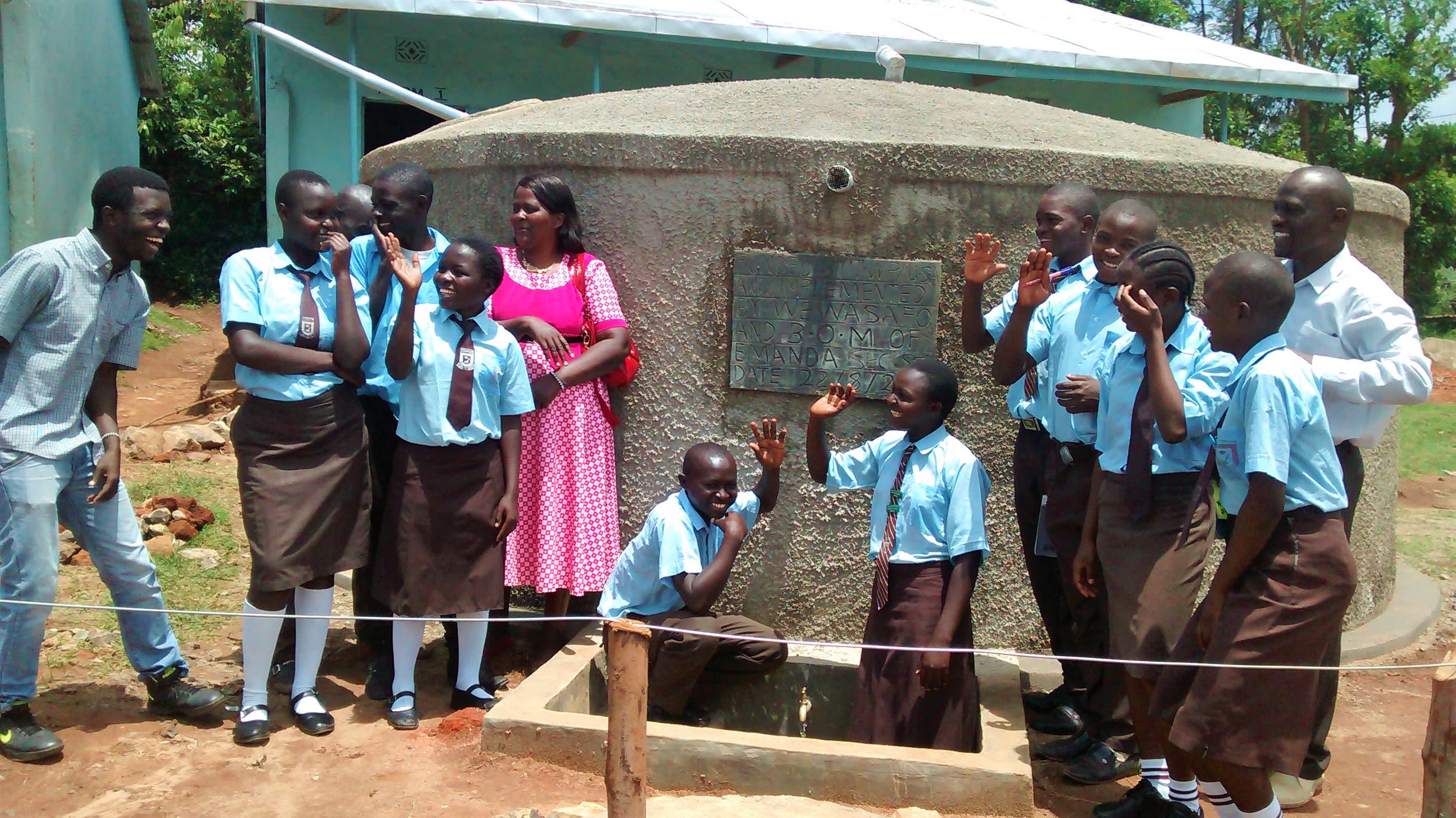This project is a part of our shared program with Western Water And Sanitation Forum (WEWASAFO). Our team is pleased to directly share the below report (edited for clarity, as needed).
Welcome to the School
Friends Emanda Secondary School is an offshoot of Emanda Primary School. It is adjacent to the primary group, and has to bear with a lot of noise from the primary school pupils on a daily basis. Due to limited land resources, the available playground space is shared by the two institutions on a well-thought out schedule to avoid wrangles among the learners.
Because of their many struggles, especially those due to water scarcity, this school registers extremely low on national exams. Getting into college is fully reliant on these scores, so these students are left feeling hopeless.
Water Situation
These older students have to go out into the community in search of water. They frequent Bomu Spring, which is also a preferred source for community members. Consequently, the teachers on duty are ever ready to solve any problems arising between students and villagers. It sometimes takes an hour for students to get back to school because of the community members already in line at the spring.
Staff inspected the work that was done to protect Bomu Spring, and found that it is more for show than for function. The pipe with water flowing through it makes it easier for people to fill their containers, but not much was done to protect and filter the water that flows through that pipe. This water is brought back and used for cleaning, cooking and drinking.
So not only is there a great amount of time wasted fetching water, but this water is also unsafe for human consumption (especially by the time it's delivered back to school!). Principal Mary Mugengeya told us, "The greatest health challenges we have are insufficient food and shortage of adequate, clean and safe drinking water for our students. We also have HIV/AIDS cases among the students, though it is never made public. In case any student falls sick, we do involve the parents to find medical interventions and sometimes the school is forced to cater for the treatment cost where guardian is not concerned or very unable to give support."
Sanitation Situation
The available pit latrine doors are still new, clean and stable, and the students have managed to maintain high standards of hygiene. The primary and secondary girls even share latrines because neither institution has enough. The secondary school itself only has four doors! There aren't even any hand-washing stations for students to use after the latrines or before eating lunch.
There is virtually no waste or litter to be disposed of around campus. This is because there are no snacks until a late lunch of maize and beans at 1pm. By then, the cook and her students are so hungry that they grind everything up and cook it into the mixture.
Plans: Hygiene and Sanitation Training and Hand-Washing Stations
Training will be held for two days. The facilitator will use PHAST (participatory hygiene and sanitation transformation), ABCD (asset-based community development), CTC (child to child), lectures, group discussions, and handouts to teach health topics and ways to promote good practices within the school. The CTC method will prepare students to lead other students into healthy habits, as well as kickstart a CTC club for the school. This CTC club will oversee the new facilities, such as hand-washing stations, and make sure they are kept clean and in working condition. The two hand-washing stations will be delivered to the school, and the club will fill them with water on a daily basis and make sure there is always a cleaning agent such as soap or ash.
Plans: VIP Latrines
Two triple-door latrines will be constructed with local materials that the school will help gather. Normally we give three doors to the girls while the other three serve boys, but it is likely administration will set them aside for girls so they no longer have to share with primary students. And with a new source of water on school grounds, students and staff should have enough to keep these new latrines clean.
Plans: Rainwater Catchment Tank
A 50,000-liter rainwater catchment tank will help alleviate the water crisis at this school. The school will also help gather the needed materials such as sand, rocks, and water from the spring for mixing cement. Once finished, this tank can begin catching rainfall that will be used by the school’s students and staff. Students will no longer be responsible to find enough water to carry to school every day.
We and the school strongly believe that with this assistance, standards will significantly improve. These higher standards will translate to better academic performance!

 Rainwater Catchment
Rainwater Catchment
 Rehabilitation Project
Rehabilitation Project





































